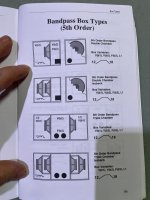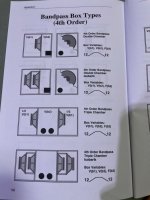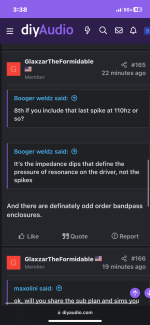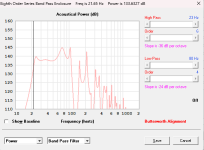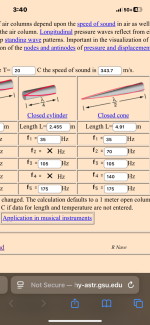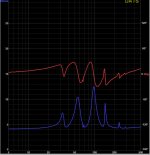Bandpass orders arent defined by impedance spikes. They are defined by rolloff and # of acoustic chambers.
ok, will you share the sub plan and sims you build ?I didnt build that. That is actually a bp5s.
Bandpass orders arent defined by impedance spikes. They are defined by rolloff and # of acoustic chambers.
But This is a quarter wave resonator with multiple resonances that don’t require individual Helmholtz shapes(chamber/vent) to create ?
It’s the impedance dips that define the pressure of resonance on the driver, not the spikes
Last edited:
8th if you include that last spike at 110hz or so?
It’s the impedance dips that define the pressure of resonance on the driver, not the spikes
And there are definately odd order bandpass enclosures.
Post #43. The second of the two. The response is different because its modeled with a different driver. Thats the one i built.ok, will you share the sub plan and sims you build ?
I'm with Max, it's a series 6th order. You need 3 chambers for an 8th order and the 4th impedance spike needs to be more pronounced like the other 3 spikes and PROBABLY be below 100hz. As you can see below, all the tuning frequencies are below 100hz...tru SUBwoofer.

Remember,
1 u = 4th order.
2 u's = 6th order.
3 u's = 8th order.
What's crazy is both BR (TL) and BP4 are 4th orders.
📦🔊📦📣🎶 4 LIFE!
1 u = 4th order.
2 u's = 6th order.
3 u's = 8th order.
What's crazy is both BR (TL) and BP4 are 4th orders.
📦🔊📦📣🎶 4 LIFE!
And there are definately odd order bandpass enclosures.
Post a pic and measurement of a BP3, BP5, or BP7.
a front loaded horn is a common example of a third order bandpass. decware housewrecker is a 7th order bandpass. hexibase has created multiple examples of odd order enclosures.

There are plenty of pics out there though most of them are catagorically misappropriated. Look at the response of a flh vs bp4. Focus on the acoustic lp rolloff. Flh is a bp3. Now look at a bp6s and a tapped horn and do the same. Tapped horn is a bp5s.Post a pic and measurement of a BP3, BP5, or BP7.
just now, rew measured bp6 helmholtz verses tapped pipe/horn with the same drivers[8 and 4ohm pairs] and approximate tuning
The reason this phenomena happens is because the CHAMBERS are not present to reject the higher out of band frequencies.
this happens to be the full wave length between one side of the box to the other (or its a coincidence)?
You know the answer; and this is why any time you replace a chamber with a pipe or horn you reject less of the higher frequencies. Because they are reflected by the nearest wall. Now go back to your cookbook and look at the filter slope refrences. You can see that one is higher order than the other. This makes an odd order bandpass. Even order bandpass matches relatively well both hp and lp. The higher the order the more hp rejection and resonant amplification. Chamber numbers are kind of arbitrary but not nearly as arbitrary as impedance.
so these are (or no?) actually the same (disquised by all the extra 1/4 wave resonances in the red box?
Physically, the differences closely resemble a crossover circuit. Chamber is represented as capacitance, ports are represented as inductors. Interference of two or more radiation points outside of the enclosure also represents another order. technically you should be able to add these components to calculate bandpass order. I don't think it's that simple because then the enclosure I modeled in bp8s becomes a bp4 and a th becomes a second order. I think it's easier to look at the enclosure AND the response to determine what it is. Because really, when I use a 4th order crossover, I don't check the components of the circuit, I just look at the rolloff and see if it's 24db higher at double the frequency.
- Home
- Loudspeakers
- Subwoofers
- So i impulse bought a sub. What would you do with it?
